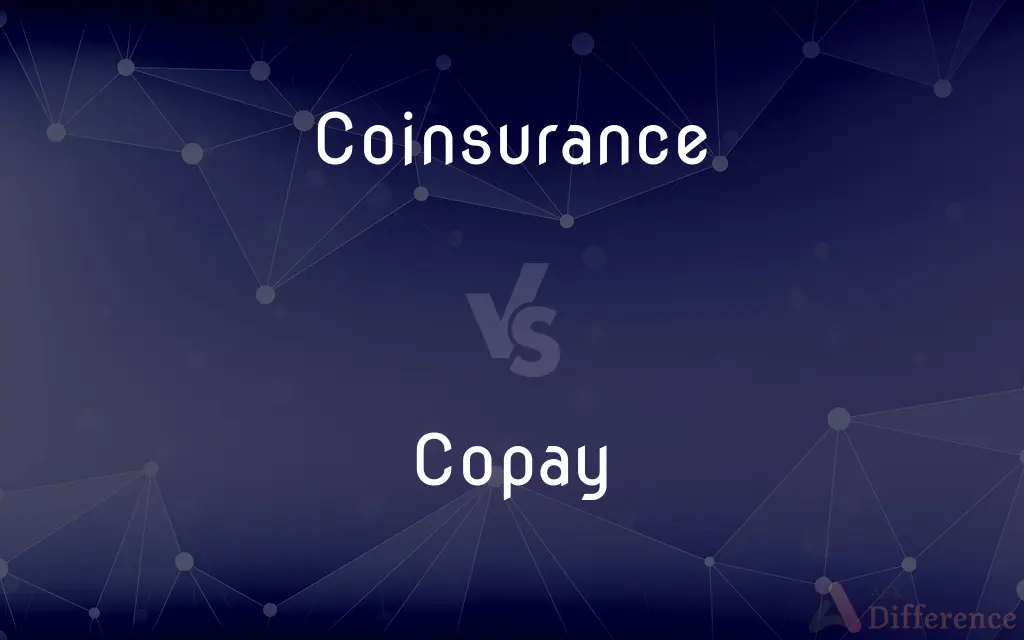Coinsurance vs. Copay — What's the Difference?

Difference Between Coinsurance and Copay
ADVERTISEMENT
Compare with Definitions
Coinsurance
Insurance held jointly by two or more insurers.
Copay
A copayment.
Coinsurance
A form of insurance in which a person insures property for less than its full value and agrees to be responsible for the difference.
Copay
To jointly pay with another or others.
Coinsurance
A sum of money paid by a patient to a health care provider after a health insurance company has paid a contractual amount for a covered service, usually a fixed percentage of costs. Coinsurance usually applies after an annual deductible has been paid.
ADVERTISEMENT
Copay
A copayment.
Coinsurance
(US) The joint assumption of risk between the insurer and the insured party.
Coinsurance
(international) The joint assumption of risk between multiple insurers.
Coinsurance
Insurance jointly with another or others; specif., that system of fire insurance in which the insurer is treated as insuring himself to the extent of that part of the risk not covered by his policy, so that any loss is apportioned between him and the insurance company on the principle of average, as in marine insurance or between other insurers.
Coinsurance
Insurance issued jointly by two or more underwriters
Share Your Discovery

Previous Comparison
Summary vs. Conclusion
Next Comparison
Flip vs. Reverse















































